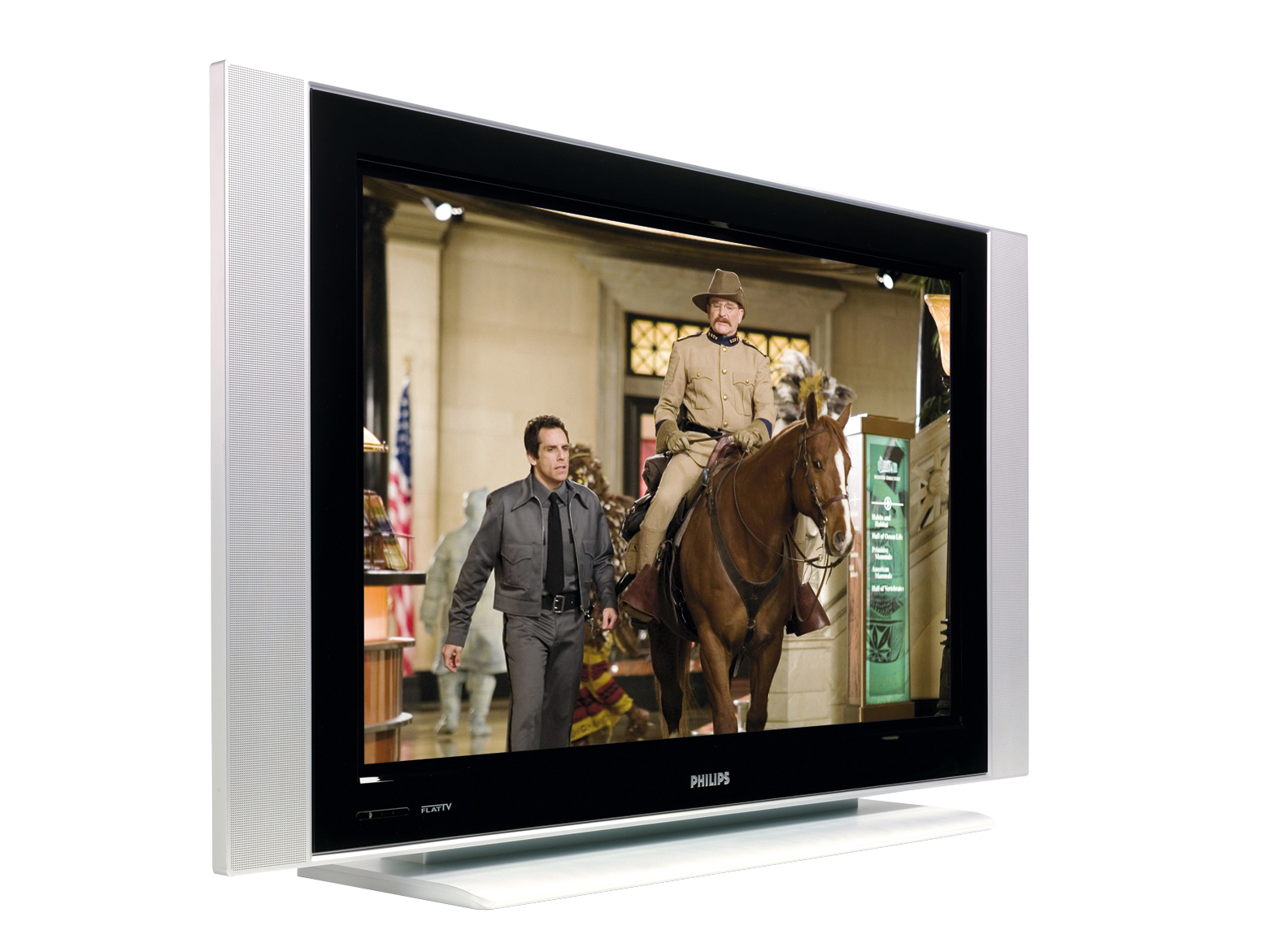TechRadar Verdict
Cheap by price and cheap by nature. There are far better TVs around
Pros
- +
Attractive price
Cons
- -
Picture colour tones
Black level response
Why you can trust TechRadar
You don't have to be Sherlock Holmes to deduce the main attraction of this latest plasma effort from Philips. At just £900, this 42in TV is cheap with a capital C. Which would be great, if only the price to be paid in performance terms wasn't so severe.
Things get off to an adequate start, with reasonably attractive, if slightly brash, looks based around the classic gloss black bezel/silver speakers combination in vogue right now. And the set's connections fit the bill well enough, providing two HDMIs and component jacks for digital and analogue (respectively) hi-def connection alongside the customary standard TV fare.
The twin HDMIs in particular are a decent find on such an affordable 42in plasma. There is one connection disappointment, though, in that the set doesn't carry an analogue PC input, leaving you having to use one of the HDMIs for your PC needs.
In terms of features, it comes as zero surprise on such a budget screen to find no sign of Philips' Pixel Plus image processing technology. However, the set does carry a built-in digital tuner, backed up by the normal seven-day EPG and reminder-setting functionality.
The set also provides Virtual Dolby Surround and Active Control, the latter of which automatically adjusts various picture facets based on an assessment of the incoming source. Plus there are picture in picture options, a basic noise reduction system, and a contrast booster. Sadly none of its features help any aspect of the 42PF5521D's performance impress us in any way.
Alarm bells start ringing as soon as we note the screen's claimed 1024 x 1080 native resolution. This immediately indicates that it's using Alternate Lighting of Surfaces (ALiS) technology from Fujitsu, a system that's delivered inconsistent results in the past.
Picture performance
Indeed, the 42PF5521D falls prey to all the ALiS problems we've seen before. These start with the picture's colour tones, which seldom look truly natural, and at times look frankly bizarre. For instance, during a run-through of A Night at the Museum, the greens of the museum's vegetation looked sickly at times, while skin tones of the actors often look unnaturally red, especially during dark scenes.
Also very disappointing is the 42PF5521D's black level response, which leaves shadowy areas of the picture looking hollow and dark backdrops looking grey rather than black. As Larry (Ben Stiller) confronts Teddy Roosevelt (Robin Williams) about the museum's contents coming to life and attacking him, we could clearly see dithering noise over the ridges of the actors' faces - a common plasma artefact of days gone by, but one which we really don't want to see today.
Add to all this a disappointingly soft look to images that does no real justice to the hi-def nature of A Night at the Museum, and some feeble speakers that quickly sound rather tinny whenever the film's score swept in, so the only really positive thing we can say about the 42PF5521D's performance is that it's not shockingly bad with standard-def.
The saying goes that you pays your money and you takes your chances - but this is one money-saving chance we strongly urge you not to take.
Tech.co.uk was the former name of TechRadar.com. Its staff were at the forefront of the digital publishing revolution, and spearheaded the move to bring consumer technology journalism to its natural home – online. Many of the current TechRadar staff started life a Tech.co.uk staff writer, covering everything from the emerging smartphone market to the evolving market of personal computers. Think of it as the building blocks of the TechRadar you love today.
